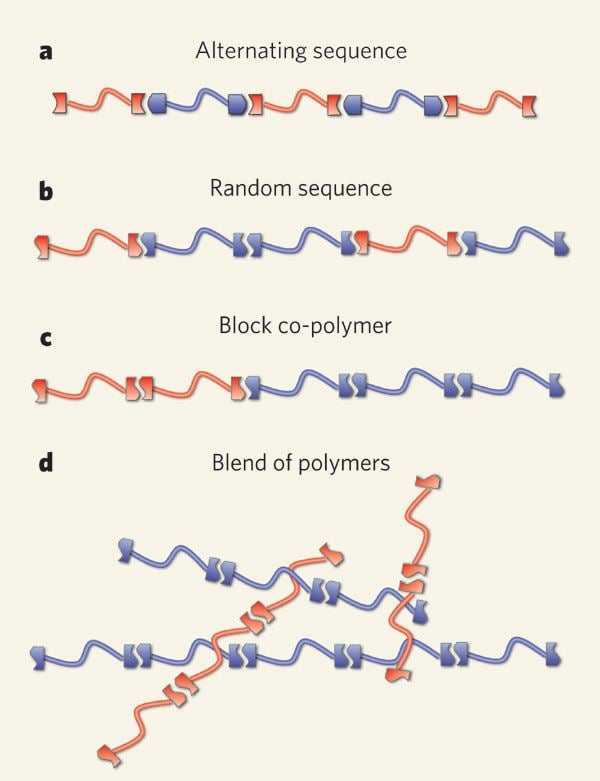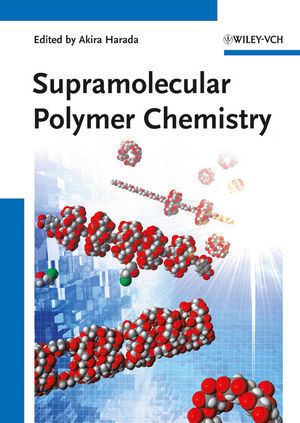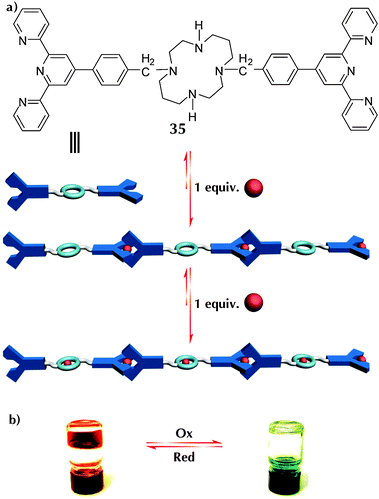 | ||
Suprapolix supramolecular polymers in action
Supramolecular polymers are a kind of polymers whose monomeric units hold together via highly directional and reversible non-covalent interactions. Unlike conventional bonded polymers, supramolecular polymers engage in a variety of non-covalent interactions that define their properties. These interactions include hydrogen bonding, π-π interaction, metal coordination, and host-guest interaction. Owing to the presence of these reversible noncovalent interactions, supramolecular polymers exhibit dynamic properties such as self-healing.
Contents
- Suprapolix supramolecular polymers in action
- Wunc 2015 supramolecular polymers nicholas lanigan
- Self healing property
- Optoelectronic property
- Biocompatible property
- Examples of supramolecular polymers
- Hydrogen bonding based self healing supramolecular polymers
- olymers containing coordination complexes
- interaction based self healing supramolecular polymers
- Potential biomedical applications
- Drug delivery
- Gene transfection
- Others
- References

Wunc 2015 supramolecular polymers nicholas lanigan
Self-healing property

Due to the nature of supramolecular polymers, the noncovalent interactions make supramolecular polymers more dynamic and reversible. Such properties enable supramolecular polymers to construct a dynamic and reversible network, which are able to develop self-healing materials based on noncovalent bonds. Compared with self-healing materials based on covalent bonds, these supramolecular polymers-based self-healing materials can restore the initial structure and function of polymers before being exposed to damages, and can also undergo repeating damage-heal process.
Optoelectronic property

To achieve the light-to-charge conversion is the prerequisite step in artificial photosynthesis systems. By incorporating electron donor and electron acceptor into the supramolecular polymers, a number of artificial systems, including photosynthesis system, can be constructed. Due to the existence of more than one interactions (π-π interaction, hydrogen bonding interaction and the like), electron donor and electron acceptor can be held together in a proper proximity to afford long-lived charge separated states. Then a light-to-charge conversion system with faster photoinduced electron transfer and higher electron-transfer efficiency can be achieved in these artificial polymers.
Biocompatible property

It is quite common that biomolecules, such as DNA, protein and the like, come into being through various noncovalent interactions in biological system. Likewise, supramolecular polymers assembles itself by means of combination of noncovalent interactions. Such formation manner endows supramolecular polymers with features, being more sensitive to external stimuli and able to render reversibly dynamic changes in structures and functions. By modifying monomeric units of supramolecular polymers with water-soluble pendants, bioactive moieties as well as biomarkers, supramolecular polymers can realize various kinds of functions and applications in biomedical field. At the same time, their reversible and dynamic nature make supramolecular polymers bio-degradable, which surmounts hard-to-degrade issue of covalent polymers and makes supramolecular polymers a promising platform for biomedical applications. Being able to degrade in biological environment lowers potential toxicity of polymers to a great extent and therefore, enhances biocompatibility of supramolecular polymers.
Examples of supramolecular polymers
Three types self-healing materials are illustrated here: hydrogen bonding-based, metal coordination-based and π-π interaction-based self-healing supramolecular polymers.
Hydrogen bonding-based self-healing supramolecular polymers

A bivalent poly(isobutylene)s (PIBs) with barbituric acid functionalized at head and tail. Multiple hydrogen bonding existed between the carbonyl group and amide group of barbituric acid enable it to form a supramolecular network. In this case, the snipped small PIBs-based disks can recover itself from mechanical damage after several-hour contact at room temperature.
olymers containing coordination complexes

pH-control self-healing supramolecular polymers. The formation of Mono-, bis- and triscatehchol-Fe3+ complexes can be manipulated by pH, of which the bis- and triscatehchol-Fe3+ complexes show elastic moduli as well as self-healing capacity. For example, the triscatehchol-Fe3+ can restore its cohesiveness and shape after being teared.
π-π interaction-based self-healing supramolecular polymers
Chain-folding polyimide and pyrenyl-end-capped chains give rise to supramolecular networks.
Potential biomedical applications
With the excellent nature in biodegradation and biocompatibility, supramolecular polymers show great potential on development of drug delivery, gene transfection and etc.
Drug delivery
Multiple cellular stimuli could induce responses in supramolecular polymers. The dynamic molecular skeletons of supramolecular polymers can be depolymerized when exposing to the external stimuli like pH in vivo. On the basis of this property, supramolecular polymers are capable of being a drug carrier. Making use of hydrogen bonding between nucleobases to induce self-assemble into pH-sensitive spherical micelles.
Gene transfection
Effective and low-toxic nonviral cationic vectors are highly desired in the field of gene therapy. On account of the dynamic and stimuli-responsive properties, supramolecular polymers offer a cogent platform to construct vectors for gene transfection. By combining ferrocene dimer with β-cyclodextrin dimer, Aredox-control supramolecular polymers system has been proposed as a vector. In Cos-7 cells, this supramolecular polymersic vector can release enclosed DNA upon exposing to H2O2 and achieve gene transfection.
Others
Rationally designed supramolecular polymers-based polymerss can simultaneously meet the requirements of aqueous compatibility, bio-degradability, biocompatibility, stimuli-responsiveness and other strict criterion. Consequently, supramolecular polymers can be applied to the biomedical field as a robust system. Other than applications mentioned above, other important and fascinating biomedical applications, like protein delivery, bio-imaging and diagnosis and tissue engineering, are also well developed.
